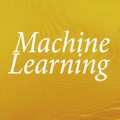5G D2D Communication promises improvements in energy and spectral efficiency, overall system capacity, and higher data rates. However, to achieve optimum results it is important to select wisely the Transmission mode of the D2D Device to form clusters in the most fruitful positions in terms of Sum Rate and Power Consumption. Towards this end, this paper investigates the use of Distributed Artificial Intelligence (DAI) and innovative to D2D, Machine Learning (ML) approaches to achieve satisfactory results in terms of Spectral Efficiency (SE), Power Consumption (PC) and execution time, with the creation of clusters and backhauling D2D network under existing Base Station/Small Cell. Additionally, one of the major factors that affect the creation of high-quality clusters under a D2D network is the number of the Devices. Therefore, this paper focuses on a small (<=200) number of Devices, with the purpose to identify the limits of each approach in terms of number of devices. Specifically, to identify where it is beneficial to form a cluster, investigate the critical point that gains increases rapidly and at the end examine the applicability of 5G requirements. Additionally, prior work presented a Distributed Artificial Intelligence (DAI) Framework in D2D and a DAIS Transmission Mode Selection (TMS) plan was proposed. In this paper DAIS is further examined, improved in terms of thresholds evaluation, evaluated, and compared with other approaches (AI/ML). The results obtained demonstrate the exceptional performance of DAIS, compared to all other related approaches in terms of SE, PC, execution time and cluster formation efficiency. Also, results show that the investigated AI/ML approaches are also beneficial for Transmission Mode Selection (TMS) in 5G D2D communication, even with a smaller (>=5) number of devices as a lower limit.
翻译:5G D2D 通信承诺提高能源和光谱效率、总体系统能力以及更高的数据率。然而,为了取得最佳结果,必须明智地选择D2D设备的传输模式,以形成在总费率和电力消耗方面最有成果的集群。为此,本文件调查了分散人工智能(DAI)和D2D创新、机器学习(ML)方法的使用,以便在光谱效率(SE)、电力消耗(PC)和执行时间方面取得令人满意的结果,在现有的基地站/Small 单元格下创建集群和回推DD网络。此外,影响在D2D网络下创建高质量集群的一个主要因素是设备的数量。 因此,本文件调查了使用分配人工智能(D2DAI)和创新性(MLIS)的方法,确定每种方法在数量上的限制。 具体地说,甚至确定一个集群的好处,调查在现有的基地站/SDDD网络下取得的成果在快速和最终审查5G要求的适用性(DIS) 与DAML 之前的工作还展示了DIS 格式中的拟议业绩评估。



